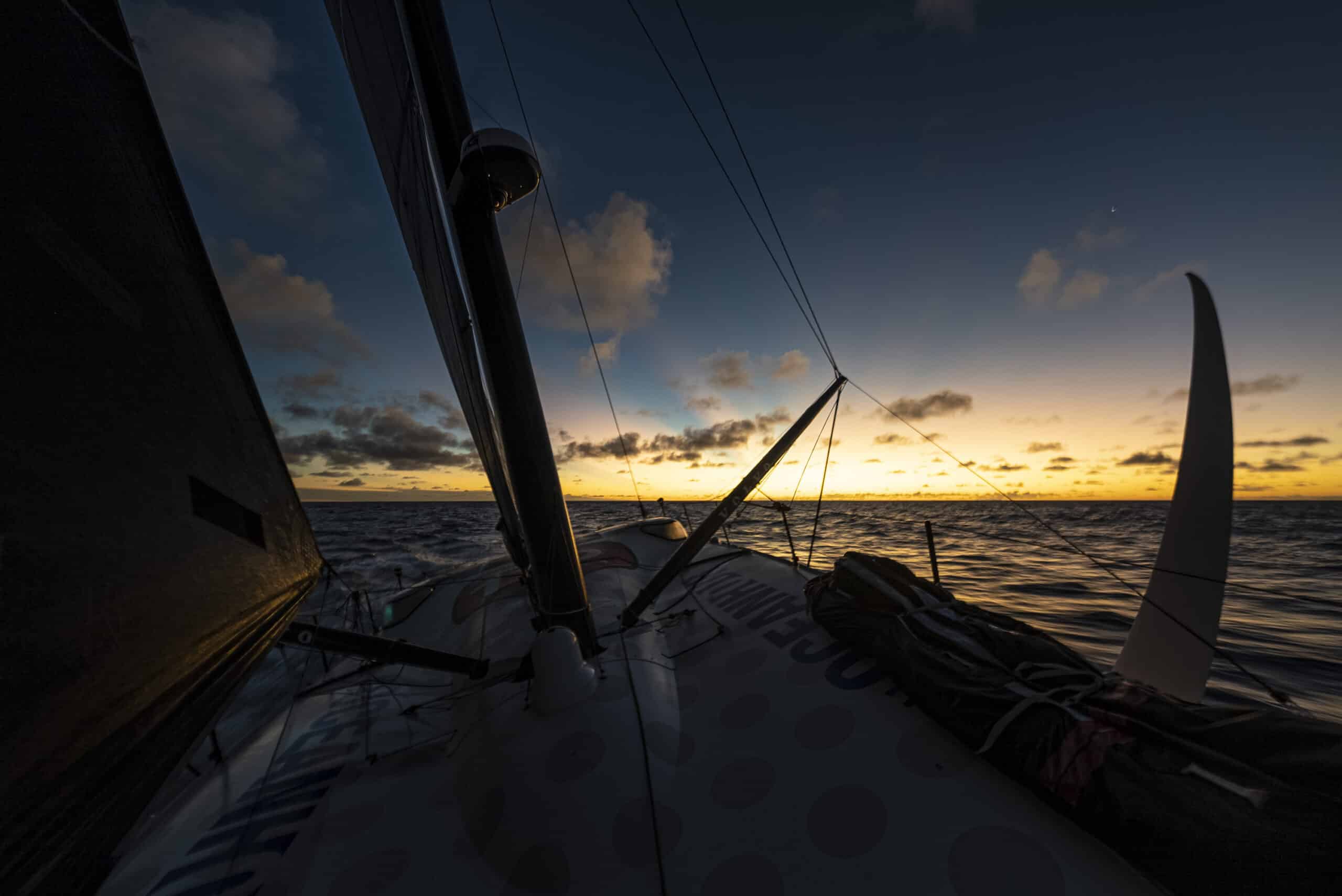THE EXCLUSION ZONE CHALLENGE
The early stages of Leg 4 have seen 11th Hour Racing Team battling its way past a number of exclusion zones. These zones have been a defining part of the tactics and the strategy as the boats seek to make the shortest and most efficient progress towards the finish in Newport, Rhode Island, without falling foul of these ‘no go’ areas.
Marcel van Triest (NED), who has been providing navigational support and strategy to the team, is a veteran of nine editions of the race, five times as a sailor and four times as onshore support. “Back when I first did the race in the late 80s, all the way up to the late 90s, there were no exclusion zones at all,” says the Dutchman. “But the world has become a busier place, there is a much greater weight of traffic out there on the ocean, and the technology has changed immensely in that time. So there are good reasons why there are so many exclusion zones now.
“For example the exclusion zones that we have now for the Amazon River, well of course the river has always been there, but the circumstances have changed. I even suggested to the race organizers that we create these zones this time around because with an IMOCA we have a fast moving vessel with only four and a half crew, with hardly any visibility or lookout. It’s good to be cautious and have these exclusion zones in place.
“This is very different from 20 years ago when we had a crew of 12-15 or even 20 people, with watches and proper lookouts, and we were going slow at displacement speeds, not foiling. Going slow made it easier to avoid potential obstacles. On an IMOCA with its foils, you don’t want to be running into a huge log that has just flowed out of the Amazon. Better to give the river a wide berth altogether.”
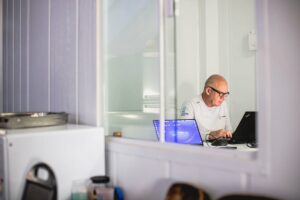
While there is less visibility and fewer crew for lookout onboard a modern IMOCA, the huge advances in satellite and tracking technology mean humanity is much more aware of hazards in the water, such as ice in the Southern Ocean or whales and other large mammals or fish in the ocean. “We have more exclusion zones in place due to technology that allows us to identify dangerous areas,” says van Triest. “When we were racing before, we didn’t have this knowledge and were blissfully unaware. The same goes for wildlife exclusion zones – there’s now technology that we didn’t have before so today people are better educated and more environmentally conscious, which is great.”
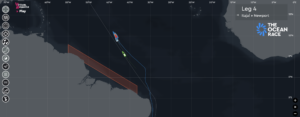
Damian Foxall (IRL), Sustainability Program Manager and onboard Trimmer for 11th Hour Racing Team during Leg 4, is also on the Marine Mammal Advisory Group. Speaking on day five of Leg 4 as Mālama was working its way in and out of a number of exclusion zones, Foxall commented: “It’s a great opportunity to be out here racing in the ocean and seeing the amazing bird life and marine mammals. But this also has a risk to it – a risk in that these boats go so fast, and with the foils and the keels, there is the risk of endangering a marine mammal. So the Race puts in place exclusion zones and we are working our way around the Abrolhos Exclusion Zone right now.
“In the Marine Mammal Advisory Group we have worked with The Ocean Race to integrate a proper risk assessment for marine mammals and marine life for each leg of the course. This involves assessing where the high levels of the marine mammal population is and what zones are best avoided. We have one here called the Abrolhos Banks which is one of the zones where up to 25,000 Southern Right Whales and Humpbacks come to from Antartica, where the warmer waters are, and to breed. We are a month away from this activity, but just to be safe, the organizers have defined this exclusion zone for us to sail around.
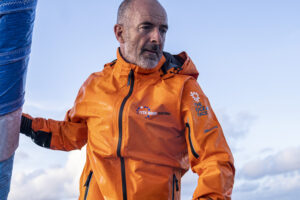
“The exclusion zones are very specific to each leg, and on Leg 4 of this edition of the race there are quite a number due to the high level of whales that we have along the coast. When we will be sailing into the finish at Newport, Rhode Island, we are in the territory of the very endangered population of Northern Right Whales. Luckily we are also out of season and they have moved away from the waters outside Narragansett Bay.
“The area has very good underwater live tracking systems, with flyovers, underwater drones, and ships all reporting sightings. And the live tracking system is updated all the time. If the mammals are seen as we approach Newport, we will be informed and the race organizers will adjust our race course accordingly. Right now, we are doing a few extra miles for the whales and no one has any complaints about that.”
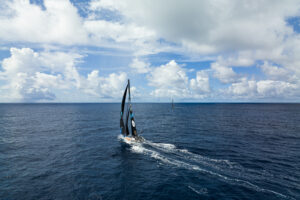
Race Director Phil Lawrence defines the exclusion zones in four broad categories:
- Areas with high levels of hazards or marine traffic – the oil fields off the coast of Brazil fall into this category;
- Areas with high levels of protected marine life – for example the whale breeding grounds on the Abrolhos Bank off the coast of Brazil are an example of an area the boats were be routed around;
- Areas with specific hazards – the exclusion zone off the northeast coast of Brazil, in place to keep the boats away from debris that comes out of the Amazon River Delta;
- Designated shipping lanes where traffic can only travel in one direction – there is a zone like this on the approach to Rhode Island.
Whichever kind of exclusion zone you’re sailing near or towards, it creates a strategic and navigational challenge for all the sailors, and 11th Hour Racing Team’s navigator Simon ‘Si Fi’ Fisher (GBR) in particular. “Exclusion zones make things tricky, especially when you have to decide whether to go on one side or another,” says the six time veteran of the race. “It can obviously create a binary tactical choice.
“The best example so far from this leg was the Santos oil field. There were tricky decisions on whether to go inside or outside. In very open ocean sailing, everyone can take the same route and play the optimum. However, when you put an exclusion zone in the middle, you are forced to choose an inside or outside route, a ‘one way or the other’, which sometimes leaves neither of them as the ideal choice.
“So, you have to be quite diligent in weighing the options: what are the gains and losses, and what are the risks? One route may seem like the obvious choice, but it is a lot more complicated with more things to work out. It definitely spices things up and makes things interesting onboard.”
Si Fi is pleased to have avoided the worst of these dilemmas so far, but there will be more to come, particularly on the final run-in to Newport. “Looking back to the other night, going around the Santos oil field exclusion zone, it would have been more straightforward if we had gone to the east of it around the outside. We would have had better pressure, a more steady gradient wind, and potentially would have been quicker. However, with the current the way it was, it was actually very difficult to get out there. So, we probably gave up a bit of our lead trying to see if we could make that option work, but then resolved to go inside with the rest of the fleet.
“When you have a big exclusion zone, you have to choose how much risk you want to take, and that also plays a big part in our tactics. Do you just follow everyone else in, or try to lead everyone else on the same side, or take a different option that you feel might be right and lead to a big gain? Certainly, in strategy and risk, they always play an important role.”
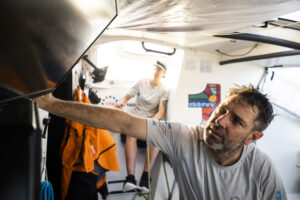
11th Hour Racing Team is currently sailing past the Amazon River Exclusion Zone in a neck and neck battle with rivals Team Malizia, with Biotherm not far behind. You can follow the adventure of the fleet on The Ocean Race Tracker.



